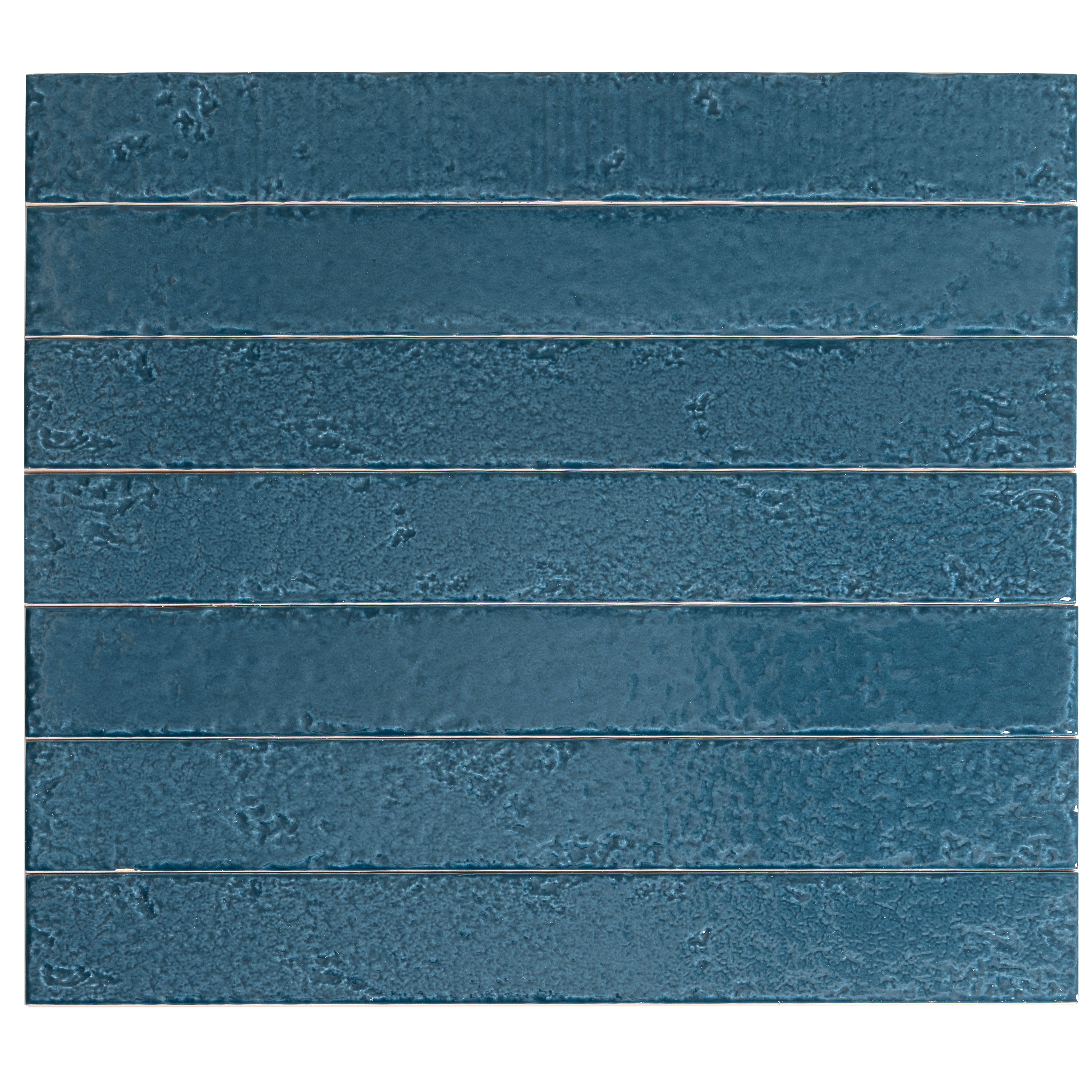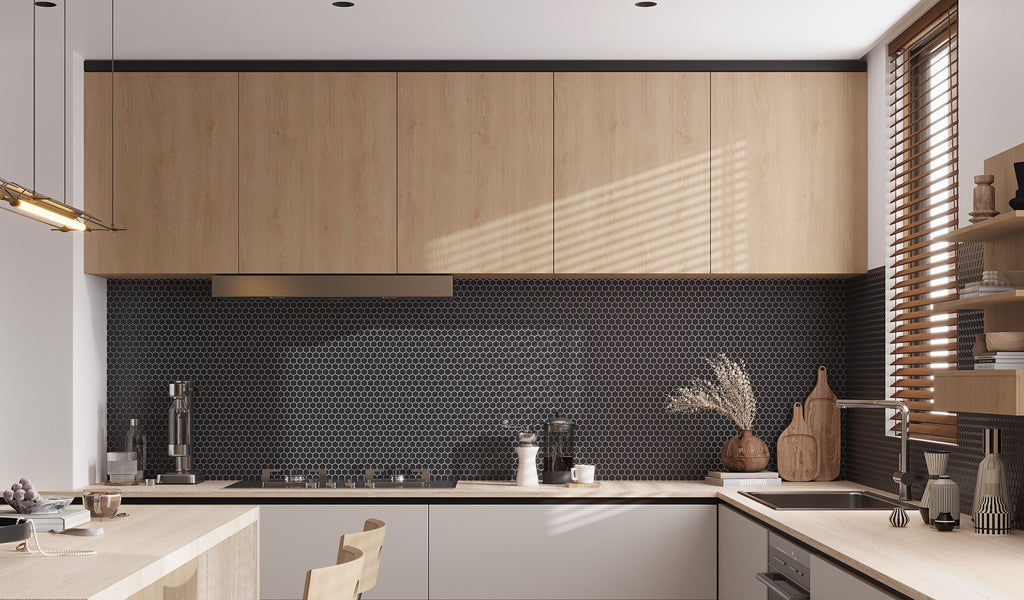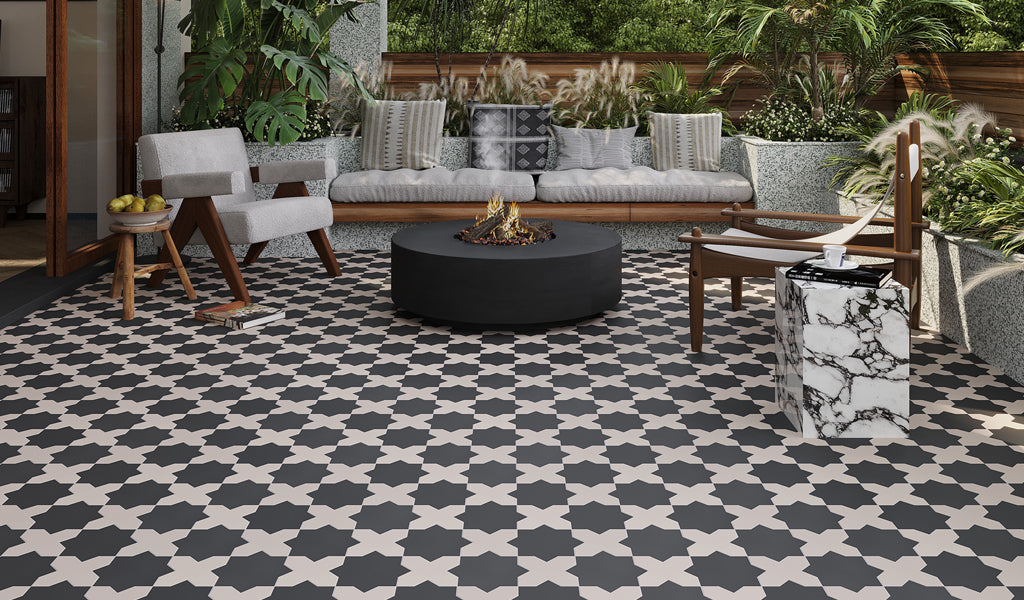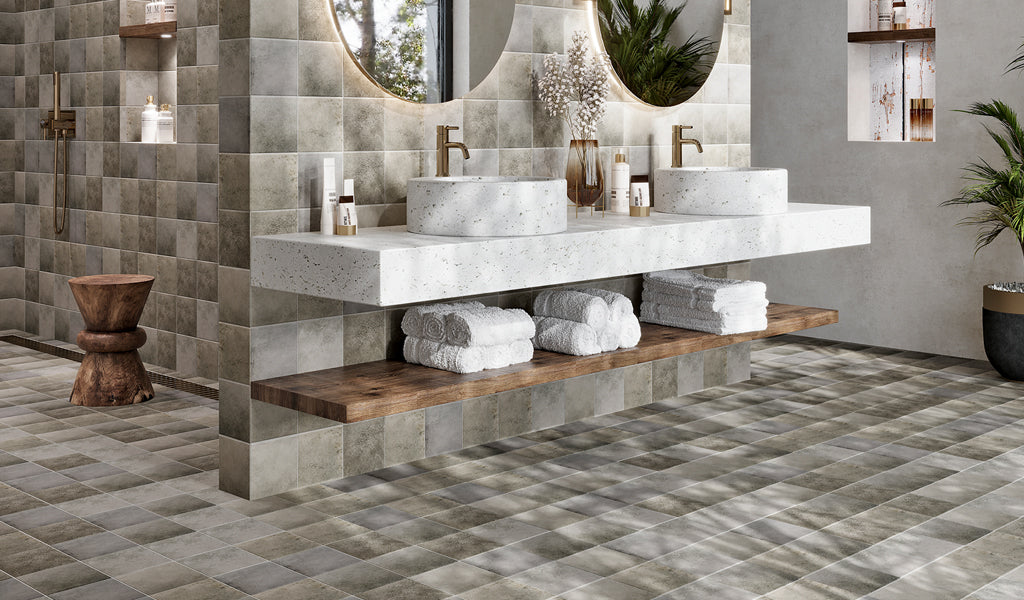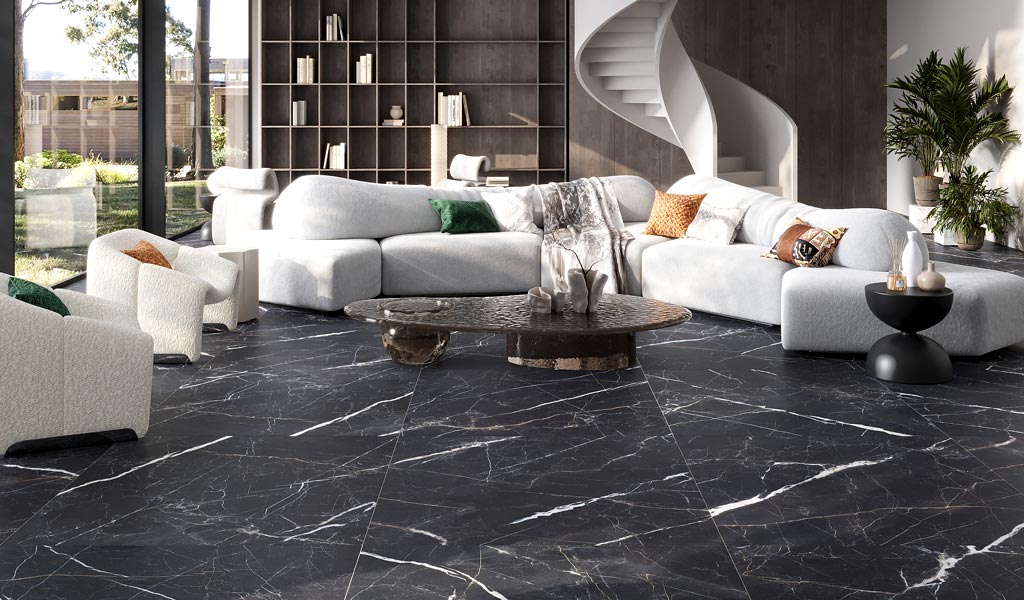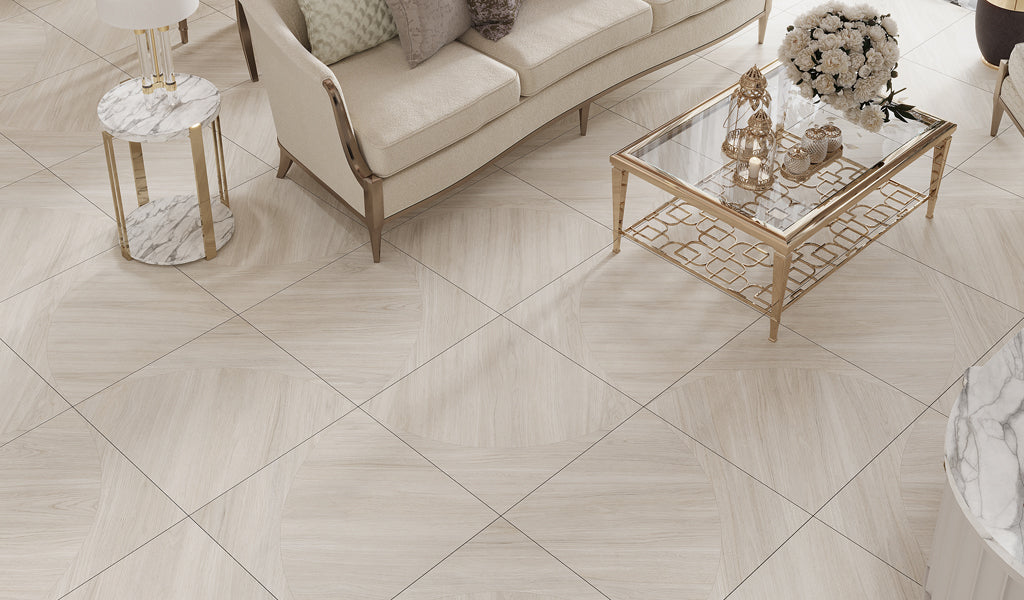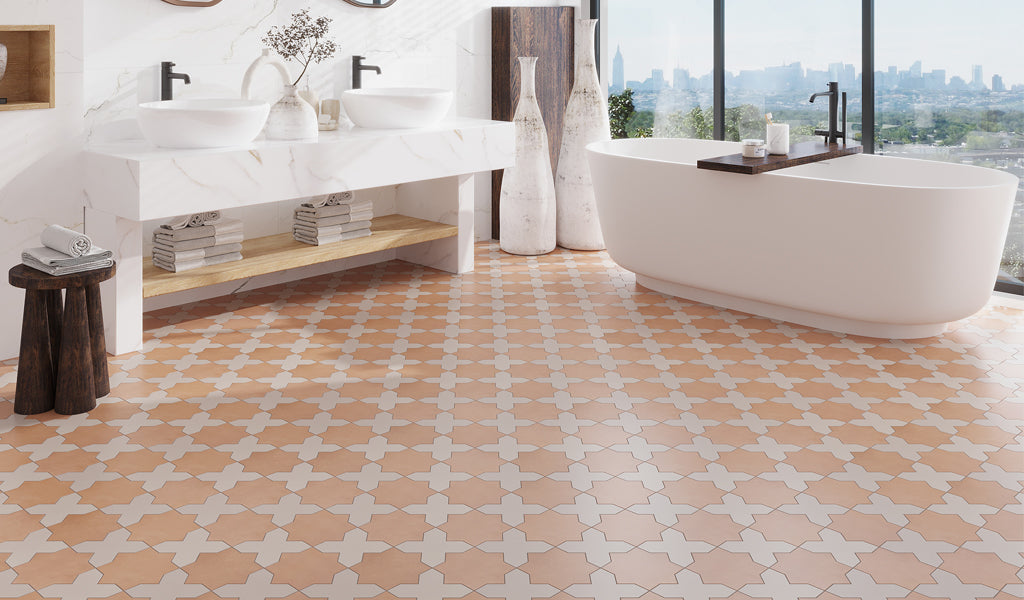What is Grout? Key Features and How to Apply It Correctly
Oct 29, 2025
Grouting is a critical step in any tiling project and plays a key role in structural integrity, stability, and durability. Whether installing large or small format tiles in the kitchen, bathroom, or outdoor space, understanding what is grout, what it’s made of, and what it’s used for can make a huge difference between a flawless finish and future frustration with cracking, staining, or loose tilework.
Here’s the breakdown to clear up the confusion around what grout is, the types used, and the steps involved in application and maintenance.
Definition
Grout is a thick paste used to fill the gaps between tiles, essentially acting as a "binding agent" that keeps everything in place and reinforces the strength and performance of the entire installation. It can be smooth or textured and comes in various colors to complement or contrast an array of tile styles. Key features of grout include:
- providing a seamless, water-resistant seal
- preventing individual tiles from rubbing against each other
- preventing the accumulation and buildup of dirt and stains
- allowing for temperature-related tile expansion and contraction
To answer the question “what is grout made of?” Well, grout generally falls into two main categories: cementitious grout and chemical grout. Each has its own subtypes, like sanded and unsanded cementitious grout, but we’ll dive deeper into these varieties a little later on.
Key Takeaways
- Grout is a paste-like material used as a filler between tiles to add rigidity, strength, and make the installation look complete.
- It is made from cement, water, and sometimes sand, or epoxy-based materials for added durability.
- The right type of grout depends on the tile, joint width, area of use, and aesthetic goals.
- Proper application and regular maintenance can greatly extend the life and appearance of your tilework.
- Epoxy grout, a premium option, offers superior stain, water, and chemical resistance.
How to Choose the Right Grout for Your Project?
When installing new tiles, it’s important to research what the grout is used for to ensure it’s the best pick for your intended application. Grouts vary in strength and some are simply made to go the distance. Whether installing living room, bathroom, or kitchen tile, the right type is crucial to how your tilework looks and performs over time. So which one should you use? The common types of grouts you’ll find when you hit your DIY store include:
1. Cementitious Grout

Cement-based grout is one of the main grout families and the most commonly used type for residential applications, including floors, walls, and backsplashes. With this grout, cement acts as the binding agent for the mixture, and it’s available in sanded and unsanded forms. Both options can be used to fill the spacing between tiles during installation, securely locking them in place.
Modern cementitious grouts often incorporate polymer additives to enhance flexibility and achieve color consistency. Just be aware that both sanded and unsanded grout are porous and require regular sealing unless otherwise specified.
Sanded Grout: As the name suggests, sanded grout consists of silica sand as an aggregate mixed with cement and colored powdered pigments. The additional structure of grit keeps grout sturdy and less likely to shrink after curing. It’s a no-brainer for most interior design flooring projects with wider joints from 1/8” to 5/8”, as its dense and durable composition can withstand the strain of regular foot traffic.
A point to note is that sanded cementitious grout comes with a lower price tag than unsanded grout. That’s because the sand used as filler is less expensive than the finer materials needed to make unsanded grout. And because sanded grout contains abrasive particles and has visible grit, it should not be used on easily scratched surfaces, like marble and glass tiles.
Unsanded Grout: Non-sanded grout isn’t blanketed with sand grains, resulting in a smoother texture that's easy to work into narrower joints from 1/16” to 1/8”. This consistency is particularly useful for vertical surfaces, like installing kitchen or bathroom wall tile, where the grout needs to stay in place without sagging.
Without sand in its mix, cured unsanded cementitious grout lacks much of the strength of its sanded counterpart. It shrinks quite a bit as it dries and won’t wear as well over time if used for flooring in high-impact and high-footfall areas. However, unsanded cement-based grout does offer a set of benefits worth mentioning.
First, it is thinner and easier to fill into tighter joints. The result is smooth, clean grout lines and a sleek finish. Second, the lack of grit makes it suited for delicate tiling materials, such as marble, glass, or glazed ceramic tile, since it won’t scratch the surface like sanded varieties. With that said, keep in mind that unsanded grout will cost more because of the added polymers used as a bonding agent.
2. Epoxy Grout

If you're wondering what is epoxy grout? This type of binding agent is a part of the chemical grout family and fast becoming the new standard for tile installation. It addresses many of the concerns homeowners and designers might face with traditional grout, such as moisture seepage and staining.
What is epoxy grout made of and what are its strengths? Epoxy is a fast-curing grout made from epoxy resins, aggregates, and a type of hardener. Its composition is significantly more durable and much stronger than both sanded and unsanded cementitious grouts. It’s non-porous, absorbing about 50 times less water than traditional cement grouts. Plus, it has double the strength and chemical resistance needed to perform exceptionally well in the most demanding environments. For example, installing Apollo Tile’s Coastal Mist 6x6 Matte Zellige Square Porcelain Tile in a swimming pool.
When you do clean it, it restores its original color instead of appearing darker or keeping a dull, dirty tint. It does not need sealing and wears incredibly well over time without becoming a dirt-collecting channel between tiles. To sum up, this type of grout does everything better.
So, what is epoxy grout used for and when is the right time to reach out for it over standard cement grout? When working in wet areas, such as laying bathroom or shower floor tile. Using epoxy tiling grout in these areas gives superior protection against moisture reaching beneath the tiles. Other areas include heavily trafficked zones like the entryway and living room, fireplace surrounds, kitchen and bathroom backsplash, or even pool interiors and patio floors.
With all these amazing benefits, it’s worth keeping a few considerations in mind when selecting grouting material. For one, epoxy grout can cost 3 to 4 times more than sanded and unsanded grout. It tends to have a plastic-like appearance, which might not be everyone’s aesthetic preference. Also, without expert knowledge, it isn’t the easiest grouting product to work with because of its quick-setting time.
 Pro Tip:
Pro Tip:
Always take into account the area of use (wall or floor, indoor or outdoor), exposure to moisture, and tile material when selecting the best grout for your installation project. The appearance and working capability of grout is significantly affected by the width of the tile joints. Learn more in our blog: 1/16 vs 1/8 Grout Lines.
Step-by-Step Guide to Grouting Tiles

Once you’ve chosen the right grout, it’s time to apply it correctly. Here’s a simplified guide:
 Step 1: Prepare the Surface
Step 1: Prepare the Surface
- Ensure tiles are properly set and the adhesive is fully dry (usually 24 hours).
- Clean joints and remove spacers, dust, or debris.
 Step 2: Mix the Grout
Step 2: Mix the Grout
- Follow the manufacturer’s guidelines to achieve the best results.
- Mix until you get a smooth, peanut butter-like consistency.
- If using epoxy grout, mix in small batches due to fast curing times.
 Step 3: Apply the Grout
Step 3: Apply the Grout
- Use a rubber float to press grout diagonally across the tiles.
- Work in small sections to prevent premature drying.
 Step 4: Remove Excess Grout
Step 4: Remove Excess Grout
- After 10-15 minutes, wipe excess grout off the tile surface with a damp sponge.
- Rinse the sponge and change water frequently to avoid haze buildup.
 Step 5: Final Clean and Seal
Step 5: Final Clean and Seal
- Once the grout is dry (check product instructions), clean any haze with a soft cloth or haze remover.
- Apply a grout sealer if using cement-based grout to prevent staining and moisture damage.
Maintenance Tips for Grout
Maintaining grout isn’t just about keeping it clean; it’s also about preserving its function. Below are easy-to-follow steps to keep tilework in tiptop shape:
1. Routine Cleaning: Use pH-neutral cleaners to clean grout, prevent it from degrading, and ensure the longevity of tiles. Avoid acidic cleaners or abrasive scrubbers that can erode or weaken the surface.
2. Sealing (for Cement-Based Grout): Set up a resealing routine, which should be done every 6–12 months or sooner, depending on traffic and moisture exposure. Doing this will prevent water absorption and the soaking up of liquid stains.
3. Watch for Mold and Cracks: Inspect grout regularly in high-moisture areas like showers. Mold growth indicates a sealing or ventilation issue. Additionally, repair cracks immediately to avoid water damage beneath the tile surface.
Common Mistakes to Avoid When Grouting Tile
Of course, grouting is a crucial part of laying new tiles; a skill that's pretty easy to master but just as easy to get wrong. Even a well-laid tile job can be ruined by simple grout mistakes. Here are some to watch out for:
Using the Wrong Grout: Sanded grout isn’t recommended for delicate surfaces, such as when installing glass or polished stone. Unsanded grout is ideal for vertical surfaces such as walls and backsplashes.
Overwatering the Mix: The amount of water added to cement-based grout determines how the mix flows. Adding too much weakens grout, leading to cracks or color inconsistency.
Skipping Sealing Grout: Not sealing sand or unsanded grout makes it vulnerable to moisture, mold, and stains. Which, in turn, can affect the rigidity of the entire installation. Make sure to seal grout once a year or sooner, depending on the location and wear.
Rushing the Process: When grouting tiles, allow proper drying times between steps to ensure it sets properly. Walking on the floor tile too early will affect the overall finish. Always check for guidelines on the product package for the best results.
Ignoring Maintenance: Dirty, cracked grout not only looks bad but also lets moisture in, leading to structural issues. Proper upkeep is essential to keep tilework in tip-top shape.
Conclusion
So, what is grout? It's more than just a filler between tiles. Grout is a critical component that ensures durability, cleanliness, and aesthetic appeal in any tiling project. Whether you're a DIYer or a pro, knowing what grout is made of, what grout is used for, and how epoxy fits into modern applications will help you choose wisely, apply confidently, and maintain an excellent installation for years. By following best practices and avoiding common mistakes, your tiled surfaces can stay strong, beautiful, and functional over time.
Frequently Asked Questions:
1. Is grout waterproof?
Sanded and unsanded cement grouts are porous and require periodic sealing to strengthen resistance against moisture and stains. Epoxy grout is naturally waterproof and does not need sealing.
2. Can grout crack over time, and how can I prevent it?
Grout can crack due to improper installation, lack of sealing, and moisture exposure. To prevent this, ensure correct application, avoid harsh chemicals when cleaning, and seal the grout regularly.
3. Can I use epoxy grout for bathroom floors or walls?
Epoxy grout is non-porous, durable, and stain-resistant, making it the ideal fit for both tiled bathroom floors and walls, such as installing our Sage Green 3x16 Matte Subway Porcelain Tile.
4. How long does it take for grout to cure?
Cement-based grout can take anywhere from 24 to 72 hours to cure completely. Epoxy grout typically dries faster, often within 24 hours. Always check the manufacturer’s instructions for the best application.
5. When is the perfect time to regrout my tiles?
When there are visible signs of damage like cracks, discoloration, or mold. Regrouting is also necessary when grout has completely aged and deteriorated. Check out our blog on simple steps to regrout tile.
6. How long does cement-based grout last?
Cement-based grout can last anywhere from 8 to 20 years with proper application and care.
7. Can grout be used for mosaics or small tiles?
Absolutely. Grouting mosaics and small-format tiles keeps everything in place. If you’re in the market for tiles that forgo this step, explore our groutless tile collection.


